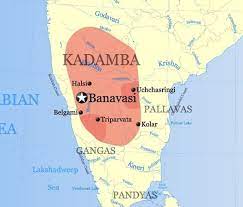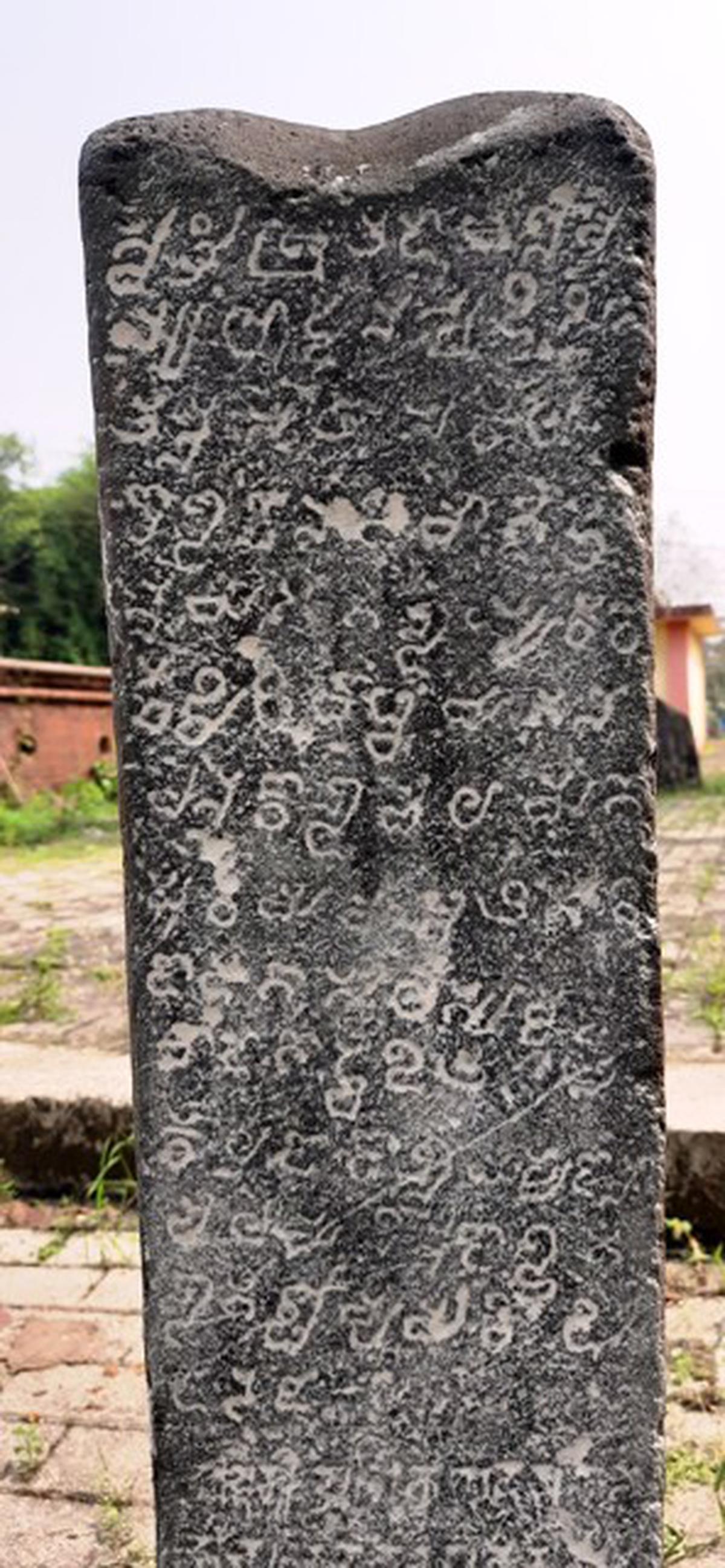Kadamba Inscription
10th century Kadamba inscription written in Kannada, Sanskrit found in Goa.
Kadamba Dynasty (345-535 C.E.)
- Extent – The Kadamba dynasty was an ancient Indian dynasty that ruled over parts of South India, particularly the present-day Karnataka region, from the 4th to the 6th centuries CE.
- Founder – The Kadamba dynasty is believed to have been founded by Mayurasharma, who was originally a feudatory of the Pallavas, a prominent dynasty of South India.
- Capital – The early capital of the Kadamba dynasty was Banavasi, located in present-day Karnataka.
- Later, the capital was shifted to Vaijayanti (modern-day Banavasi).
- End – The Kadamba kingdom came to an end with Pulakeshin II’s capture of Banavasi during the reign of Ajavarman.
- Kadambas of Goa – They were the subordinates of Chalukyas of Kalyana.
- Chalukyan emperor Tailapa II appointed Kadamba Shasthadeva as mahamandaleshwara of Goa for his help in overthrowing the Rashtrakutas.
- Kadamba Shasthadeva conquered the city of Chandavara from the Shilaharas in 960 A.D and later, he conquered the port of Gopakapattana (present Goa).
- Gundayya, the son of Talara Nevayya, may have participated in this battle, and won the port at the cost of his life.
- His father may have erected a memorial stone with the inscription in the temple of Mahadev of Cacoda to commemorate the heroic fight of his son.

The Inscription
- The inscription was discovered in the Mahadeva temple at Cacoda in southern Goa.
- It is in the literary style of Talangre inscription of Jayasimha I of the same period.
- Message – Talara Nevayya’s son Gundayya having taken a vow to fulfil his father’s desire of capturing a gopura of the port of Goa, fought and died after fulfilling his father’s wish.
- The record is composed as a vocal statement on the death of his son from the mouth of a lamenting father.
